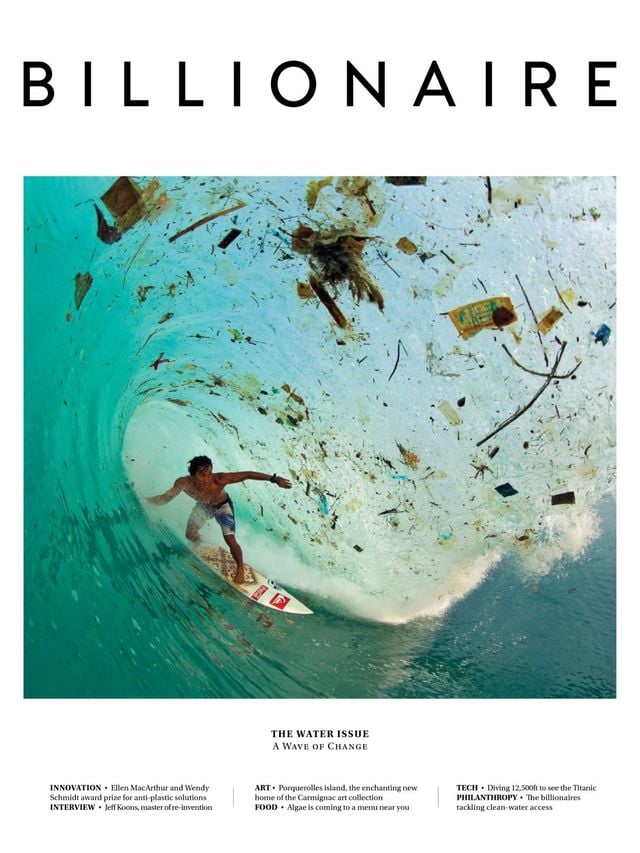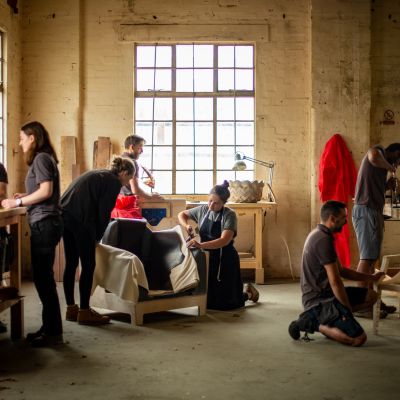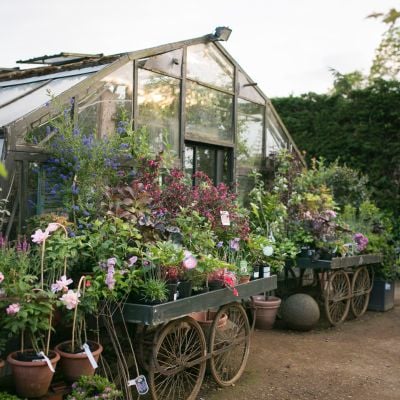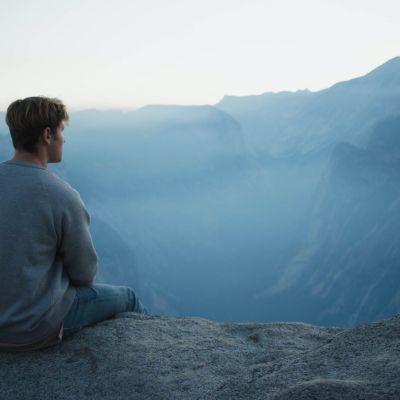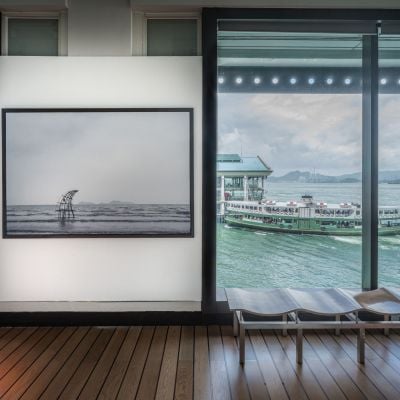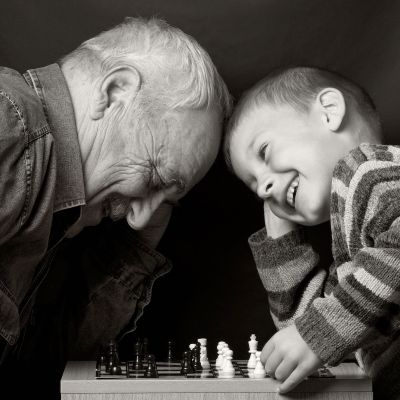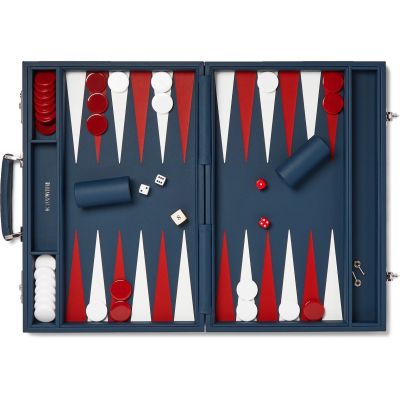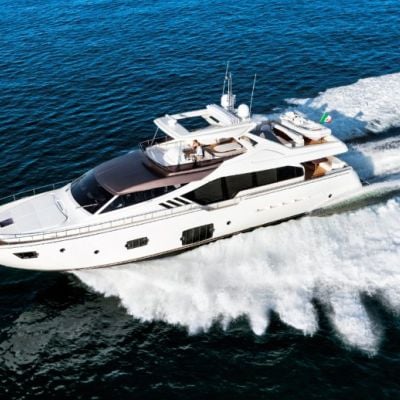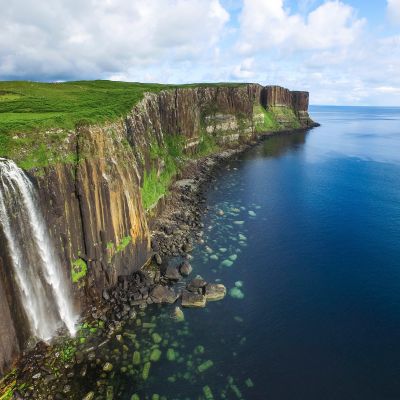Plastic Fantastic: An Interview with Jeff Koons
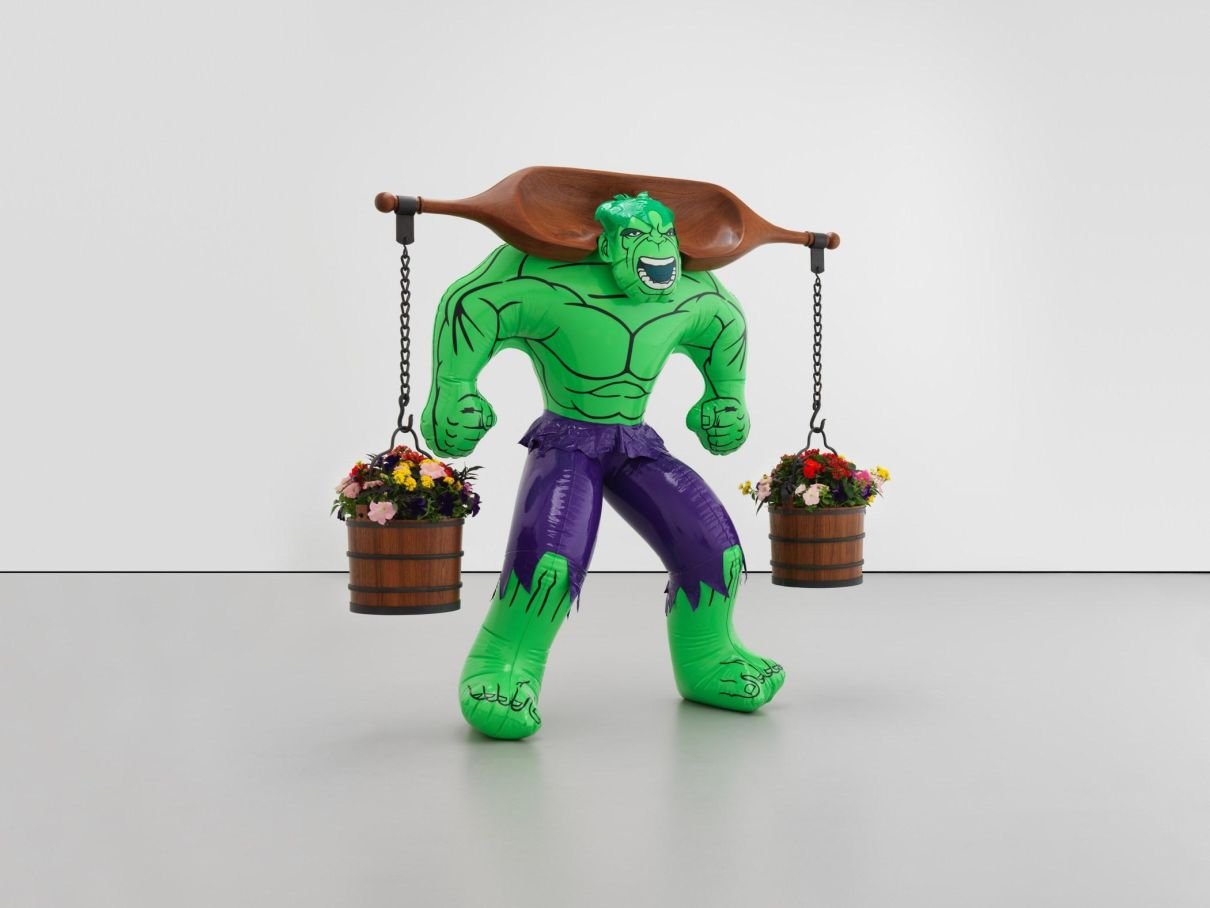
Jeff Koons is the master of self-reinvention.
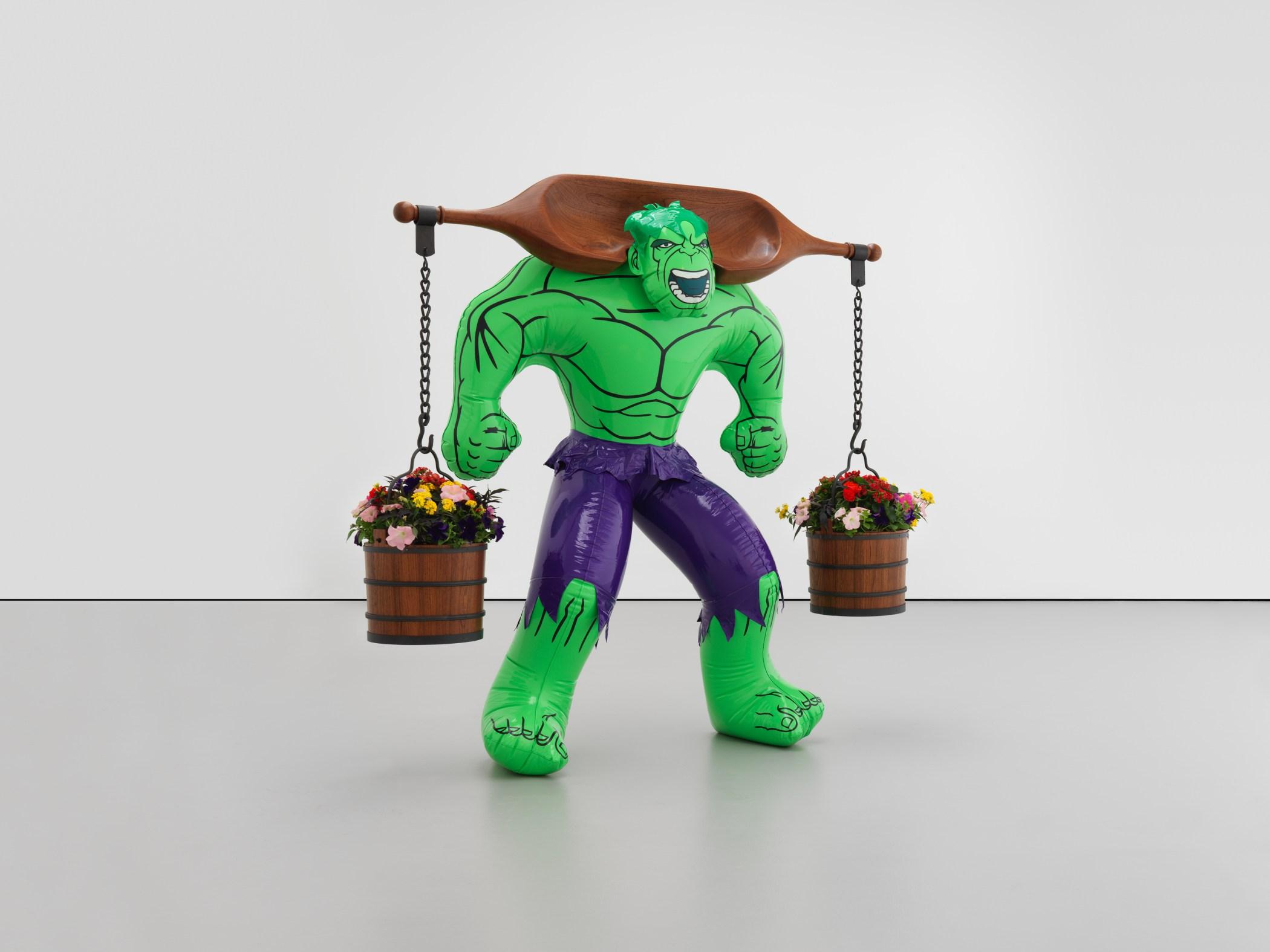
Jeff Koons and I are sat within the ice-white walls of David Zwirner’s gallery in Hong Kong. We both arrived 15 minutes ahead of schedule, so we shared a lift on the way up to the 17th-floor gallery to where the Gazing Ball series is showing during Art Basel Hong Kong. Holding the door for me, Koons is the perfect gentleman. Soft-spoken, gentle-mannered and clean-cut, he gives me a wolfish grin with just a hint of danger twinkling in clear-blue eyes. He is dressed in an immaculate navy suit with a blue shirt — top button undone — and smart trainers. At the age of 63, the former financial trader looks trim and tanned, just back from a family holiday in Hawaii, barely a day older than he looked at 30.
His agelessness does not surprise me. Whatever you think of Koons and his work, he has proven himself again and again the master of reinvention.
“I always just wanted to participate,” he says. “When I was younger and I learned about the avant-garde, I thought wouldn’t it be great to… create your own life, transform your life through art, and change that of the community around you.”
That he has achieved in spades. Like him or loathe him, Koons has an uncanny knack of being inexorably intertwined with popular culture and earning himself an eternal place in art-history books (although he insists otherwise). Because Koons — although his work polarises opinion — truly is the 21st century art-world Midas. He specialises in transforming the most banal signifiers of subculture into prized objets d’art that collectors battle to pay millions for. His world is a wonderland of bright, garish fantasy: an inflatable lobster pool toy; The Incredible Hulk; baseballs; a kitsch gold Michael Jackson cuddling Bubbles the chimp; a pile of colourful Play-Doh; even pictures of him having sex with his former porn-star wife Ilona Staller. Just like Duchamp with his urinal Fountain and Warhol’s cans of soup, the triumph of Koons lies in elevating the mundane with a seam-bursting, eye-popping, pleasure-filled makeover, and a convincing spiel to go with it.
In recent years there have been collaborations with cultural influencers and apps, such as a partnership with Snapchat to see virtual reality Koons sculptures in iconic places around the world: Central Park or in front of the Eiffel Tower. Last year, a 40ft inflated Balloon Dog informed the backdrop to Jay-Z’s set at V Festival; while a bright-blue Koons Gazing Ball famously decorates Lady Gaga’s Artpop album cover. Last week, Beyoncé took to Instagram to show off her personalised Monet Louis Vuitton x Jeff Koons duffel bag, complete with a strap emblazoned ‘King Bey’.
Indeed, there’s a long list of highly visible brands he’s teamed with: from the elite (Dom Pérignon Champagne, carmaker BMW and French porcelain maker Bernardaud) to the masses (iPhone cases for Google, snowboards for Burton and a messenger bag adorned with a balloon dog for H&M).
It is this sense of marketability that has always been at the heart of Koons. Long before his art-world glory, at the tender age of eight he was painting copies of Old Masters that his father would sell at his furniture store. In the 1980s, after studying painting in Chicago and Baltimore, he worked as a commodities broker to allow him “to make exactly what art I wanted to make”.
Nowadays he sells, among other things, enormous balloon animals produced in stainless steel with colourful mirror-finish surfaces for millions of dollars. One earned him the record as the world’s most expensive living artist, with Balloon Dog (Orange), which Christie’s sold for US$58.4 million in November 2013.
What, I ask, does he believe is the reason for his success? Why do people buy his art?
Now a caveat, because getting a straight answer out of Jeff Koons is not an easy task. It’s not that he is evasive, in fact, he comes across as eager. But even simple questions are met with a circuitous, lofty, enigmatic and often complicated response. Instead of answering directly he might cite the philosophy of Marcel Duchamp or John Dewey. By the time he has finished, you are struggling to remember your original question and, indeed, whether it’s been answered at all.
His language is a unique dialect of Koonsian, peppered with meaning-defying expressions such as “transcendence”, “universal vocabulary” and “connectivity”. If you were hearing it for the first time, you might be enthralled. If like me, you’ve read the same quotes word-for-word in a dozen previous interviews with Koons, it begins to dawn on you how smart this man is.
So going back to my question, why do people love his art?
“The only way I can respond is to think about the art that moves me, and what I enjoy about art,” he muses. “I enjoy very visceral sensations and the things that stimulate me have a plastic quality. I wanted to create my own personal iconography to create these intense sensations. It is like creating a drug, that you’re able to stimulate yourself, excite yourself, you can feel your parameters are being expanded, you want to share that with others,” he says.
As a young artist, he says he found certain works such as those by American surrealist Jim Nutt or Manet’s Luncheon on the Grass, “very stimulating”, and felt inspired to create something that brought people a similar feeling. He recalls getting a ‘hit’ off some of his first inflatable pieces. “It was so exciting I had to go out and get drunk, get some beers, just to come down from the high, from the plastic synthetic intensity.”
As for the sums that his work changes hands for, Koons shrugs it off as “so abstract”. “I like to think people enjoy the connectivity and content of the world. It is how art functions in primitive times, and at the same time how art has a future to function for us, and it’s a vehicle that stimulates us physically and intellectually.”
Koons says that making art for him is not about the money and that, deep down, his creations come from an “initial biological urge”. “I want to do something, like a beaver making a dam or a bird building its nest, upon responding to those initial biological urges, then placing them within a context. That’s what I get up for every day. I love it.”
Born in 1950s York, Pennsylvania, Koons belongs to a certain group of artists, another being British peer Damien Hirst, who employ assistants to assemble their work. Koons has over 100 in his studio in New York. They produce around 10-15 sculptures and 10 paintings a year. While he still “doodles” on paper from time to time to relax, Koons is famously “hands-free” when it comes to his saleable art. He says he couldn’t make it any other way.
“I didn’t want my own hand to manipulate my work to lose the original vision. If I was going to start painting it myself, I would get lost in putting the paint down, maybe the shoulder here won’t figure, or I see an outline of a duck here… you get lost. You have one intention and you do something else,” he explains. He compares himself to Alfred Hitchcock: “Was he the actor? No. Was he the cameraman? No. But he still made the film.”
Koons adds: “Of course, every mark on there I am responsible for. Sometimes I think, oh, wouldn’t it be nice, because I love to draw and paint, even making free-hand drawings is quite joyful,” says Koons. “But that’s almost a different thing, that’s a celebration of the body, and I love to celebrate the body, but I also like to keep it involved with idea — that distance lets me keep it involved with idea and not about the body.”
Koons, although inspired by the avant-garde, does not want to reinvent the wheel. “A lot of young artists make the mistake that people want something new in the art world, they want something different. If I crack the newest technology, my work will be new. No, because that is not what art is. Art is something that is old, true and used, but technology is just a tool,” he explains.
Cutting-edge technology is used in all of the works at his New York studio, including the piece in front of us. It is a reproduction by Spanish master Diego Velázquez with a shiny-blue stainless-steel mirror ball — a Gazing Ball — in the centre. The studio takes a high-resolution photograph of the painting, which the computer breaks down into about 7,000 colours, and then creates a stencil, like a very complex painting by numbers. After three coats, the painting is done. “It gives me the most accurate quality to pay homage to the original painting,” explains Koons.
The Gazing Ball series shows that great art doesn’t need to be new, says Koons. “They show we are always on the shoulders of our forebears. The only way you can experience transcendence is to find something greater than yourself,” he explains.
Porcelain is the inspiration for the next series, says Koons, which will take around four years to complete. Koons has referenced this in the Bluebird Planter currently showing in the gallery, although this is made from steel.
And, after that, who knows? Koons’ family life is important to him and he loves travelling with his six younger kids and his wife Justine, a former assistant in his studio. All of them are talented at art, in particular, the youngest, little Mickey, who is an “excellent draftsman”.
“My work is about becoming and being able to transform. I’ve always enjoyed David Bowie’s music, and it’s the same sort of transformation process in the arts,” he explains. “So, I hope I’ve been able to inform a new generation that you can do it, that the concept of the avant-garde is very real.”
This article originally appeared in Billionaire's Water Issue, June 2018. To subscribe click here.

